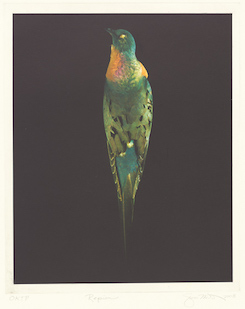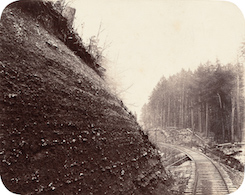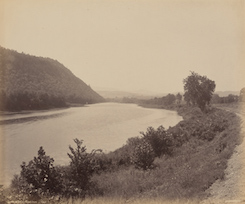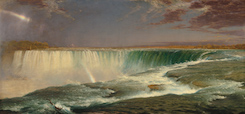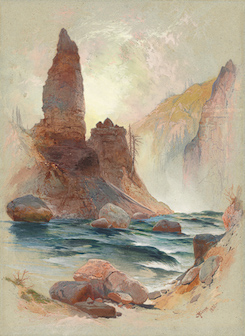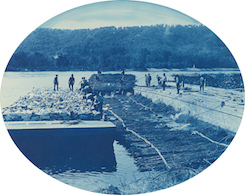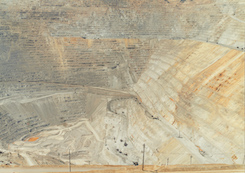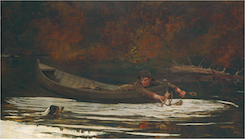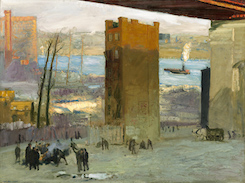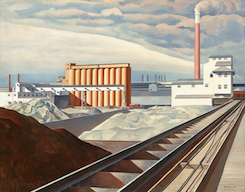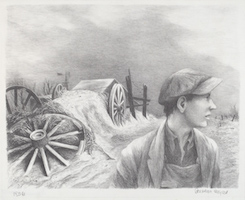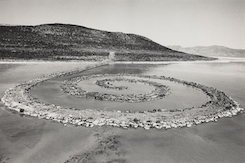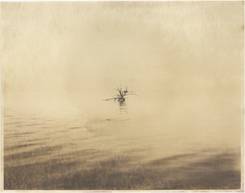
Carleton E. Watkins, Grizzly Giant, Mariposa Grove, 1861, albumen print from collodion negative mounted on paperboard, Gift of Mary and David Robinson, 1995.35.24
In what ways have Americans impacted the environment?
What is our collective responsibility toward the earth and each other?
How do artists engage with these questions through works of art?
The US national park system exists in part because of artists. Photographer Carleton Watkins’s mammoth photographs and intimate stereographs of Yosemite, including Grizzly Giant, Mariposa Grove, convinced a senator to propose a new bill to the US Congress reserving lands for public use. In 1864, President Lincoln signed legislation that set aside Yosemite and the Mariposa Grove as a state park for California—the first time that the federal government had ever created public parklands. The world’s first national park, Yellowstone, was established in 1872, only a few months after artist Thomas Moran traveled to the area as part of an exploratory expedition. Moran’s breathtaking watercolor studies of the area, complemented by William Henry Jackson’s photographs, helped persuade Congress to designate Yellowstone as a park “for the benefit and enjoyment of the people.”
Grizzly Giant, Mariposa Grove and Moran’s Tower at Tower Falls, Yellowstone may evoke memories or associations if you’ve traveled to the national parks, as millions of US and international visitors do annually. Local or regional parks may surface in your mind, too. Looking closely at these works of art and learning about their significance might also spark questions:
- Why did the artists choose to depict these particular natural elements and settings?
- Why and how did these works of art successfully convince lawmakers to enact new laws?
- How did viewers see and experience these works of art?
- Why did these works of art become so widespread and popular?
The US landscape is a source of pride, national identity, and pleasure for many, in part because artists like Watkins and Moran helped shape and reinforce these understandings. Their works celebrate the expansive forests, rugged mountains, and great lakes and waterways of the country. But the land is also contested and controversial. By the 19th century, millions of indigenous people, including those in Yellowstone and Yosemite, had been killed by disease and warfare, or forcibly removed from their ancestral homes to make way for settlers. In California in particular, thousands of Native people were murdered in militia raids sanctioned by the US government, leading many scholars to identify what happened as genocide. Innovations such as the railroad and agricultural mechanization made life easier and more efficient, but they also turned nature into a commodity. Today, trees, water, and other resources continue to be extracted, bought, and sold to benefit a booming export industry and a growing populace.
When land is claimed or transformed, who is affected and how? What does the natural world mean to various individuals, communities, and cultures? Why and how might we protect and sustain limited natural resources while making them available to the public?
As populations around the world increase and humans continue to upset the earth’s climate, striking a sustainable balance between human activity and nature becomes increasingly vital and difficult.




